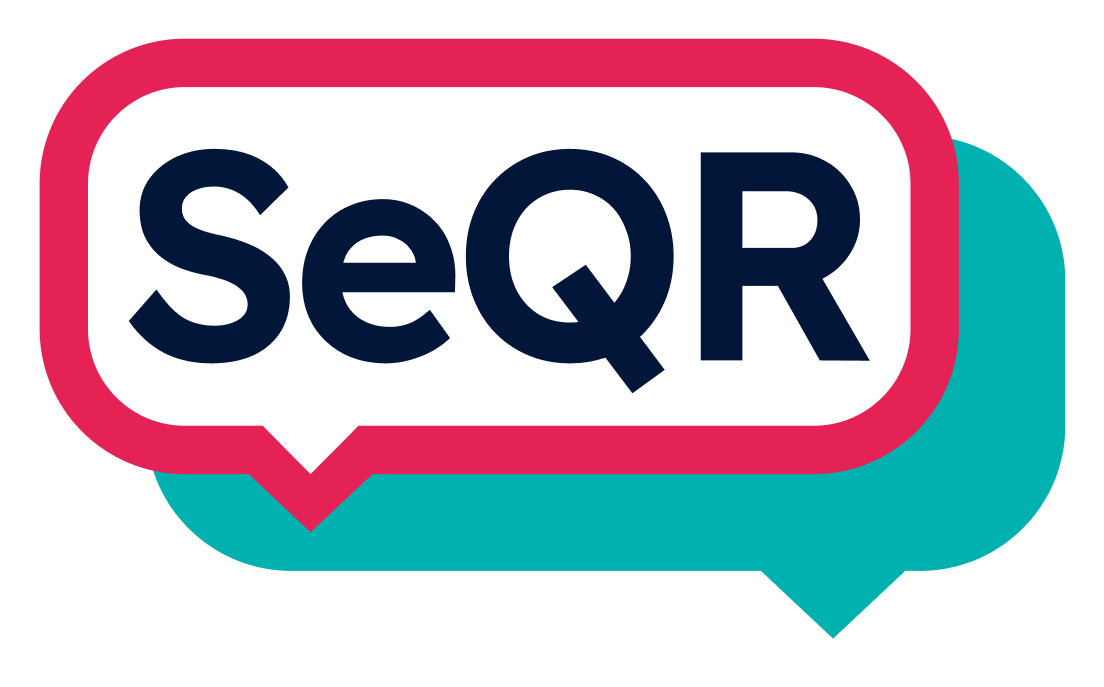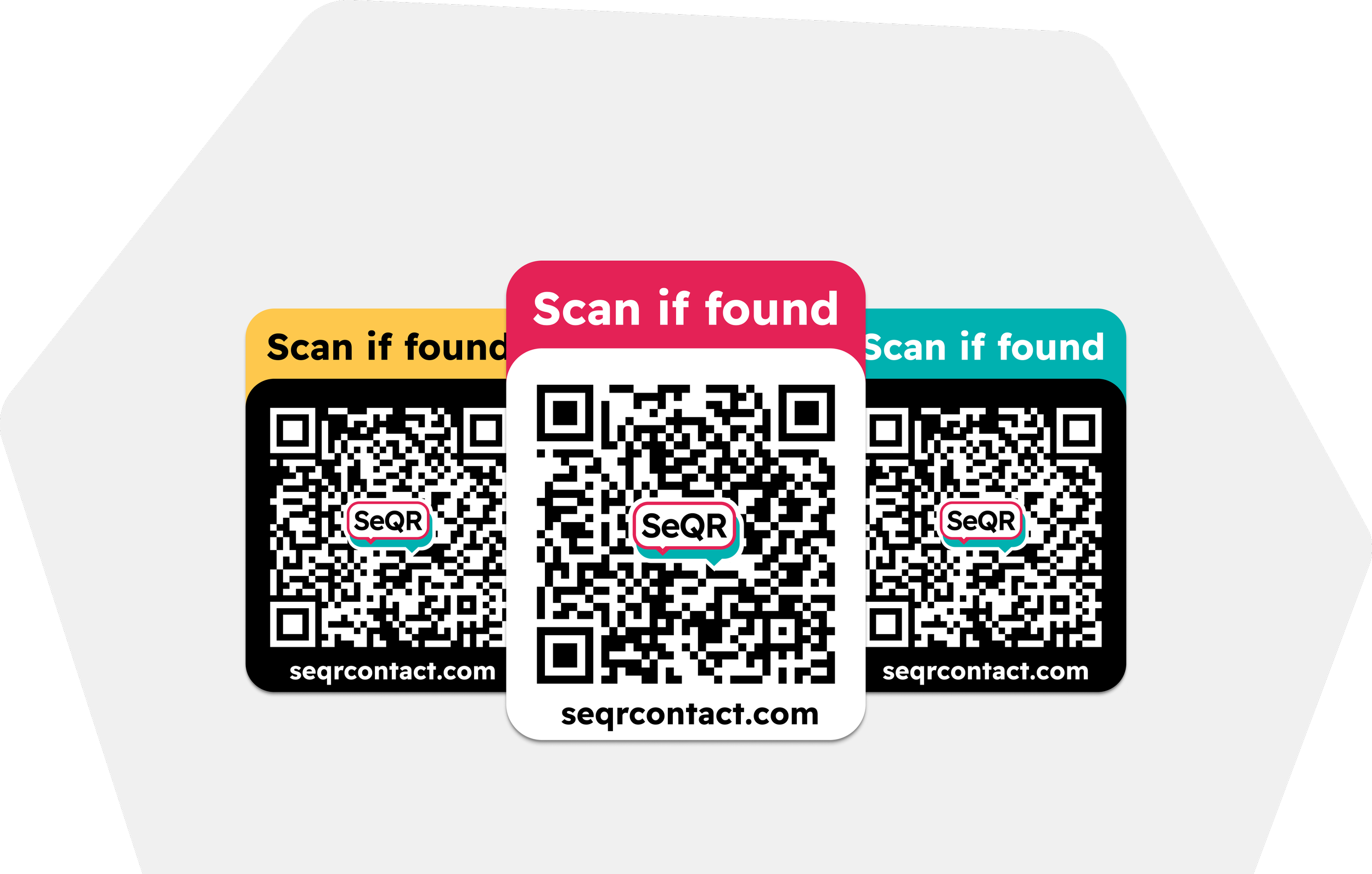What are Contact Codes?
Contact Codes by SeQR Contact
Contact codes, emerging as a modern and secure alternative to traditional contact methods like phone numbers and emails, are essentially QR codes designed to facilitate communication. Let's delve into what contact codes are, their benefits, and how they are revolutionizing the way we connect.
Understanding Contact Codes
Contact codes are QR codes that you can scan to initiate communication, bypassing the need for sharing phone numbers or email addresses. This method is especially advantageous for maintaining privacy and security, as it doesn't reveal personal contact details directly.
Advantages Over Traditional Contact Methods
Privacy and Security: Unlike phone numbers or email addresses, contact codes offer a higher degree of anonymity. This is particularly beneficial in situations where you want to communicate without revealing your personal information. They are more secure due to this anonymity, and the ability to have an unlimited number of codes adds an extra layer of privacy.
Ease of Use: Using contact codes is straightforward. With a simple scan using a smartphone, you can instantly connect with someone, be it for personal, professional, or emergency purposes. This ease of access significantly enhances the user experience.
Versatility in Communication: These codes can be linked not just to phone numbers or email addresses but also to social media accounts, messaging app links, and even virtual meeting rooms, broadening the scope of their application.
Uses of Contact Codes
Contact codes are best described as the form of contact you share or leave behind when it doesn’t feel smart to leave your phone number or email. For example:
Lost Items: Leave a Contact Code on items you would want to get back if lost, such as passports, water bottles, car keys, cameras, or children's toys.
Delivery: Leave a Contact Code by your mailbox or front door to allow delivery persons to inform you when a package has been delivered.
Property Issues: Leave a Contact Code at your front door in case there is an emergency at your home while you are away.
Parking Issues: Leave a Contact Code in your car window to avoid getting towed if double parked.
Shared Services: Leave a Contact Code with your laundry at the laundromat or with your car at an EV charging station so that others can contact you if necessary.
Meeting Strangers: Share a Contact Code over Craigslist or Facebook Marketplace to coordinate a meetup.
In each of these situations, leaving a phone number or email could compromise the safety of your identity. Because a single person can have an unlimited number of unique Contact Codes, owners can remain anonymous and keep their personal information safe even when Contact Codes are left in public.
When Contact Codes May Be Less Useful
Existing methods of communication are still valuable and will likely be the main way you communicate. They are best for:
Emergency Situations: In urgent scenarios, direct phone numbers or emails might be more efficient.
Personal Relationships: Close friends and family might prefer more direct and personal means of communication.
Business Relationships: Work colleagues and business partnerships where communication is frequent and the parties are known and trusted.
Of course, you can use contact codes for these situations if you want.
The Leading Provider: SeQR Contact
SeQR Contact, accessible at seqrcontact.com, is at the forefront of providing these contact codes. They specialize in creating QR codes that enable secure and anonymous communication. SeQR Contact offers new users a free Contact Code that users can print at home and offers Contact Codes for a variety of situations such as lost item labels, car window clings, mailbox labels, luggage tags, dog tag / cat tag / pet tags, and more. Best of all, SeQR Contact Codes do not require those communicating with contact code owners to have an app. By opting for a solution like SeQR Contact, users can enjoy the benefits of modern communication technology without compromising their privacy.
Best Practices for Using Contact Codes
When using contact codes, it's important to follow certain best practices to ensure security:
Use Reputable QR Code Generators and Scanners: To avoid risks associated with malicious QR codes, it's vital to use trusted generators and scanners. SeQR Contact offers a QR code scanner that checks the validity of QR codes before accessing any information.
Check for Tampering: Always ensure that the QR code has not been tampered with, especially when scanning codes in public places.
Verify URLs and Company Legitimacy: Before scanning a QR code, verify the legitimacy of the company and the URL to avoid phishing attempts.
In conclusion, contact codes represent a significant step forward in secure and private communication. By leveraging the power of QR technology, they offer a versatile, user-friendly, and secure alternative to traditional contact methods like phone numbers and emails, thereby enabling new, helpful connections that were not possible before. The adoption of contact codes is set to grow, offering a modern solution for our communication needs.

